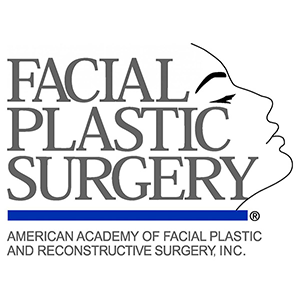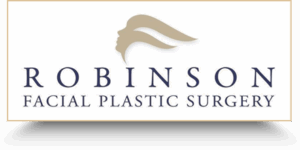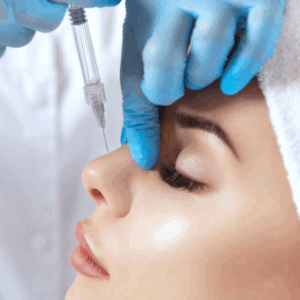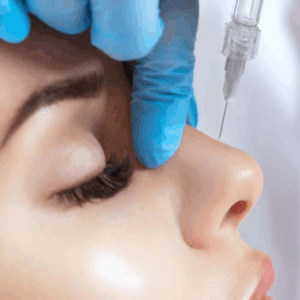- 949-831-5900
Facelift Surgery: Achieving Natural, Youthful Results

Time leaves its mark on everyone. Fine lines deepen into wrinkles, skin loses its firmness, and the vibrant contours of youth gradually soften. While aging is a natural process, modern cosmetic surgery offers remarkable solutions for those seeking to turn back the clock. Facelift surgery has evolved significantly over the past decades, transforming from obvious surgical interventions into sophisticated procedures that deliver natural, refreshing results.
Understanding what facelift surgery can accomplish, recognizing when it might be right for you, and knowing how to achieve the best possible outcomes are essential steps in this transformative journey. This comprehensive guide explores everything you need to know about facial rejuvenation through surgical enhancement.
Understanding Facelift Surgery
A facelift—clinically referred to as a rhytidectomy—is a cosmetic surgery aimed at reducing noticeable aging effects across the face and neck. The surgery works by repositioning underlying facial tissues, removing excess skin, and tightening the remaining skin to create a more youthful, rested appearance.
Modern facelift techniques focus on natural-looking results rather than the tight, windswept appearance associated with older methods. Today’s surgeons understand facial anatomy at a deeper level, working with the underlying muscular structure (the superficial musculoaponeurotic system, or SMAS) to create lifting that looks organic and maintains facial expressiveness.
The procedure typically addresses several age-related concerns simultaneously. Sagging jowls, deep creases extending from the nose to the corners of the mouth, excess skin along the jawline, and loose skin in the neck all respond well to facelift surgery. The transformation can be dramatic while still looking completely natural, which is the hallmark of excellent surgical technique.
Types of Facelift Procedures
Not all facelifts are created equal. Different techniques serve different needs, and understanding these variations helps patients make informed decisions about their treatment.
Traditional Facelift
The traditional or full facelift remains the gold standard for comprehensive facial rejuvenation. This approach involves incisions that typically begin in the hairline at the temples, continue down around the ear, and end in the lower scalp. Through these incisions, surgeons can access the deeper layers of facial tissue, reposition the SMAS layer, remove excess fat, and trim away surplus skin.
This technique delivers the most dramatic and long-lasting results, making it ideal for patients with significant signs of aging. The facelift recovery period is longer with this approach, but the transformative effects justify the investment for many patients.
Mini Facelift
The mini facelift offers a less invasive alternative for patients with early to moderate signs of aging. This procedure uses shorter incisions and focuses primarily on the lower face and jawline. Recovery time is typically shorter, and the results, while more subtle than a traditional facelift, can be quite impressive for the right candidate.
Younger patients or those with good skin elasticity often find that a mini facelift provides exactly the refreshment they’re seeking without the extensive downtime of a full procedure. However, it’s important to have realistic expectations, as this technique won’t address severe sagging or provide the longevity of a traditional facelift.
Mid-Facelift
The mid-facelift specifically targets the cheek area and the region between the lower eyelids and the upper lip. As we age, the fat pads in our cheeks descend, creating a hollow, tired appearance and deepening the nasolabial folds. A mid-facelift repositions these tissues to restore youthful fullness and smooth contours.
This procedure can be performed alone or in combination with other techniques. Many patients combine a mid-facelift with eyelid surgery for comprehensive upper and mid-face rejuvenation.
The Consultation: Finding the Best Facelift Surgeon
Choosing your surgeon is perhaps the most critical decision in your facial rejuvenation journey. The best facelift surgeon combines technical expertise, artistic vision, and a deep understanding of facial aesthetics.
During your initial consultation, look for a surgeon who listens carefully to your goals rather than promoting a one-size-fits-all approach. They should examine your face thoroughly, discussing which areas concern you most and explaining how various techniques might address those concerns. Quality surgeons use computer imaging or show you facelift before and after photos of their previous patients to help you visualize potential outcomes.
Board certification is non-negotiable. Seek a surgeon certified by the American Board of Plastic Surgery or the American Board of Facial Plastic and Reconstructive Surgery. These credentials ensure your surgeon has completed rigorous training and maintains high ethical standards.
Beyond credentials, consider the surgeon’s aesthetic philosophy. Review their portfolio of previous work carefully. Do their results look natural? Do patients maintain their unique features while looking refreshed? The goal is enhancement, not transformation into someone unrecognizable.
Communication style matters too. You should feel at ease speaking up with any questions or worries you may have. A surgeon who rushes through consultations or dismisses your questions may not be the right partner for this intimate journey.
What to Expect: The Facelift Procedure
Understanding the surgical process helps reduce anxiety and prepare you for the experience ahead.
Most facelift surgeries are performed under general anesthesia, though some surgeons offer local anesthesia with sedation for less extensive procedures. The surgery typically takes three to five hours, depending on the technique used and whether additional procedures are performed simultaneously.
The surgeon begins by making carefully planned incisions designed to hide within the natural contours of your face and hairline. They then gently separate the skin from underlying tissues, reposition and tighten the SMAS layer, remove or redistribute fat as needed, and re-drape the skin without pulling it tight. Excess skin is trimmed away, and the incisions are closed with sutures.
Many surgeons place temporary drains to prevent fluid accumulation during the first day or two after surgery. You’ll wake up with bandages wrapped around your face and neck, which provide gentle compression and support during the initial healing phase.
Most patients go home the same day, though some surgical centers offer overnight observation for added peace of mind. You’ll need someone to drive you home and stay with you for at least the first night.
Facelift Recovery: What to Expect Week by Week
The facelift recovery process unfolds gradually, and understanding the timeline helps set realistic expectations.
Week One
The first week involves the most restrictions and visible signs of surgery. Swelling and bruising peak around the second or third day before beginning to subside. You’ll likely feel tight and uncomfortable, though pain is usually manageable with prescribed medication.
Maintain an elevated head position—even during sleep—to help reduce swelling. Cold compresses applied gently can provide relief and reduce inflammation. Most surgeons remove bandages within a few days, replacing them with a lighter compression garment.
Avoid all strenuous activity, bending over, or lifting anything heavy. Your face needs time to begin healing without the stress of elevated blood pressure or strain.
Weeks Two Through Four
By the second week, much of the dramatic swelling has resolved, though some puffiness remains. Bruising fades from purple to yellow-green before disappearing entirely. Many patients feel comfortable returning to desk jobs and light social activities, though they may still wear concealing makeup or scarves.
Sutures typically come out between seven and fourteen days post-surgery. Once incisions are fully closed, you can begin gentle facial massage if your surgeon recommends it to further reduce swelling and soften tissues.
Resume light exercise like walking, but continue avoiding intense cardiovascular activity, heavy lifting, or anything that significantly raises your blood pressure.
Months Two Through Six
The subtle refinements continue for months after surgery. Residual swelling gradually dissipates, incisions mature and fade, and your new facial contours become your normal appearance. By three months, most patients see approximately 80 percent of their final result. Complete healing and settling can take six months to a year.
Throughout this period, protect your healing skin from sun exposure. UV damage not only ages skin prematurely but can also cause incisions to darken and become more visible.
Combining Procedures for Complete Facial Rejuvenation
Many patients discover that combining their facelift with complementary procedures creates more harmonious, comprehensive facial rejuvenation.
Eyelid surgery (blepharoplasty) addresses aging around the eyes that a facelift doesn’t reach. Removing excess skin and fat from the upper and lower eyelids refreshes your gaze and eliminates the tired, sad look that droopy lids can create.
Brow lift surgery corrects a sagging forehead and eyebrows, reducing horizontal forehead lines and the vertical furrows between the brows. When combined with a facelift, a brow lift ensures that the upper, mid, and lower face all reflect the same youthful energy.
Fat grafting has become increasingly popular as a complement to facelift surgery. By transferring fat from areas where you have excess to areas that have lost volume, surgeons can restore youthful fullness to the cheeks, temples, and around the mouth. This technique not only improves contours but also introduces stem cells that may improve skin quality.
Laser resurfacing or chemical peels can be performed either simultaneously or after facelift recovery is complete. These treatments address skin texture, fine lines, age spots, and sun damage that surgery alone cannot correct.
Maintaining Your Results: Life After Surgery
A facelift can turn back the clock by ten to fifteen years, but it doesn’t stop the aging process entirely. How you care for your skin and overall health significantly impacts how long your results last. Develop a comprehensive skincare routine that includes daily sun protection, medical-grade antioxidants, and retinoids. Sun damage accelerates aging more than any other environmental factor, so broad-spectrum sunscreen with an SPF of at least thirty should be non-negotiable. Stay hydrated and maintain a stable weight. Significant weight fluctuations can compromise your surgical results by stretching or sagging the skin that was so carefully repositioned during surgery. Consider non-surgical maintenance treatments as you age. Injectable fillers, neuromodulators like Botox, and laser treatments can extend and enhance your facelift results. Many patients find that these minimally invasive procedures help them maintain their refreshed appearance for years longer than they would have without maintenance care.
Finally, embrace healthy lifestyle habits. Don’t smoke, as tobacco constricts blood vessels and damages skin elasticity. Eat a nutrient-rich diet full of antioxidants. Exercise regularly to maintain good circulation and overall vitality. Manage stress through practices like meditation or yoga. These habits support not just your facelift results but your overall wellbeing.
Risks and Considerations
Like any surgical procedure, facelifts carry certain risks that patients should understand before committing to surgery.
Bleeding and infection are potential complications with any surgery, though they’re rare when proper surgical protocols are followed. Nerve injury is another concern, potentially causing temporary or, very rarely, permanent numbness or muscle weakness. Most nerve issues resolve within a few months as nerves heal. Scarring is inevitable with surgery, but skilled surgeons place incisions strategically within natural creases and the hairline where they become virtually invisible over time. Poor scarring is unusual but can occur, particularly in patients with a genetic predisposition to keloid or hypertrophic scars.
Asymmetry is a risk, as perfect symmetry is impossible to achieve and your face likely had subtle asymmetries before surgery. Most minor asymmetries are not noticeable to anyone but you. Anesthesia carries its own set of risks, which is why having a board-certified anesthesiologist or certified nurse anesthetist is essential. They monitor your vital signs throughout the procedure and adjust anesthesia levels to keep you safe and comfortable.
The most common disappointment isn’t a complication but rather unmet expectations. This underscores the importance of clear, honest communication with your surgeon during consultations. Bring photos of yourself from younger years rather than photos of celebrities whose features differ from yours. The goal is to look like a more youthful version of yourself, not to become someone else.
Cost Considerations and Financing
Facelift surgery represents a significant financial investment, and understanding the costs involved helps with planning.
According to recent industry statistics, the surgeon’s fee for a facelift typically ranges from seven thousand to fifteen thousand dollars, though this varies based on geographic location, surgeon experience, and technique complexity. This fee, however, is just one component of the total cost.
Additional expenses include the anesthesia fee (usually one thousand to fifteen hundred dollars), surgical facility fees (one thousand to three thousand dollars), pre-operative medical testing, post-operative garments, and medications. When combining procedures, costs increase but are often less than having procedures performed separately.
Most practices offer financing options through medical lending companies. These programs allow patients to pay for surgery over time rather than requiring full payment upfront. While taking on debt requires careful consideration, many patients find that monthly payments fit their budgets more comfortably than a large one-time expense. Insurance rarely covers facelift surgery since it’s considered cosmetic rather than medically necessary. However, if you’re combining your facelift with functional procedures, like eyelid surgery to improve obstructed vision, a portion of the costs might be covered.
Real Patient Experiences: Understanding Results
Reviewing facelift before and after photos provides valuable insight into what surgery can accomplish and helps set realistic expectations.
When examining photos, look beyond the obvious improvements. Notice how natural the results appear. Does the patient still look like themselves? Can you see visible scarring? How well do the results integrate with untreated areas of the face?
Consider the timeline too. Immediately after surgery, results look quite different from the final outcome six months or a year later. Initial swelling can make features appear fuller or more lifted than they will once everything settles. Conversely, some of the initial lifting may relax slightly as tissues adapt to their new position.
Pay attention to patients whose starting point resembles yours. Someone with mild sagging will have a different result trajectory than someone with severe jowling and neck laxity. Find examples that match your concerns and aging pattern.
Most reputable surgeons maintain extensive photo galleries organized by procedure type and patient age. These resources prove invaluable during the decision-making process.
Frequently Asked Questions
How long do facelift results last?
Most patients enjoy their facelift results for ten to fifteen years, though this varies based on genetics, skin quality, lifestyle factors, and the specific technique used. While you’ll continue aging after surgery, you’ll generally maintain a more youthful appearance than if you hadn’t had the procedure. Many patients eventually choose to have a secondary facelift to refresh their results.
When is the right time to get a facelift?
There’s no perfect age for a facelift. Most patients are between forty and seventy years old, but the right timing depends on your degree of aging rather than your chronological age. Some people develop significant jowls and neck laxity in their forties, while others maintain firm facial contours into their sixties. Schedule a consultation when you notice changes that bother you and are ready to address them.
Will I look different or unnatural after a facelift?
Modern facelift techniques, when performed by a skilled surgeon, create natural-looking results that preserve your unique features. You’ll look like a refreshed, more rested version of yourself rather than a different person. The key is choosing a surgeon whose aesthetic philosophy aligns with your goals and who has a track record of natural-looking outcomes.
How painful is facelift recovery?
Most patients describe post-operative discomfort as tightness rather than sharp pain. Your surgeon will prescribe pain medication for the first few days, after which most people transition to over-the-counter pain relievers. The sensation is generally more uncomfortable than truly painful, and it improves steadily each day.
Is it possible to undergo a facelift if I have existing medical issues?
Many patients with well-controlled medical conditions can safely undergo facelift surgery. Your surgeon will review your complete medical history, including all medications and supplements, during your consultation. Certain conditions, like uncontrolled high blood pressure or blood clotting disorders, may require optimization before surgery. Smoking is a significant risk factor that must be addressed, as it compromises healing and increases complication risks dramatically.
What’s the difference between a facelift and non-surgical options like threads or fillers?
Injectable fillers restore volume but don’t address skin laxity or reposition sagging tissues. Thread lifts provide minimal lifting through temporary sutures placed under the skin, but results are subtle and short-lived compared to surgical facelifts. These non-surgical options can be excellent for patients with early aging signs or as maintenance after a facelift, but they cannot replicate the comprehensive, long-lasting results of surgery.
Will people know I had surgery?
You’ll look noticeably different immediately after surgery due to swelling and bruising, so people who see you during early facelift recovery will know you’ve had a procedure. However, once healing is complete, most people will simply think you look well-rested and refreshed. Many patients find that friends and family comment on how great they look without specifically identifying surgery as the reason.
How do I minimize scarring after facelift surgery?
Follow your surgeon’s post-operative instructions precisely, especially regarding incision care. Keep incisions clean and moisturized as directed. Avoid sun exposure on healing scars for at least a year, as UV rays can cause permanent darkening. Once your surgeon approves, consider silicone scar sheets or gels, which have good evidence for improving scar appearance. Most facelift scars fade to thin, nearly invisible lines hidden within your natural contours and hairline.
Taking the Next Step Toward Facial Rejuvenation
Deciding to pursue facial rejuvenation represents a significant personal choice that deserves careful consideration and expert guidance. The journey begins with education, continues through consultation with qualified surgeons, and culminates in a transformation that can restore confidence and help you feel like yourself again. Your face tells your story, reflecting years of laughter, concern, joy, and life’s countless expressions. Facelift surgery doesn’t erase that story but rather refreshes its telling, allowing your exterior to better match the vitality you feel inside.
The key to success lies in choosing the right surgeon, maintaining realistic expectations, and committing to the recovery process. When these elements align, the results can be truly life-changing, providing not just a more youthful appearance but renewed self-assurance that radiates from within. If you’re considering facelift surgery, schedule consultations with board-certified plastic surgeons or facial plastic surgeons in your area. Come prepared with questions, be honest about your goals and concerns, and trust your instincts about which surgeon feels like the right partner for this journey. Your face is unique, and your surgical plan should be equally individualized, designed specifically to help you achieve the natural, refreshed results you deserve.

This website does not contain medical advice and the use of this website does not create a physician/patient relationship between you and Robinson Facial Plastic Surgery. The photographs of models displayed on this web site are for decorative purposes only. See before & after photos for possible results.
Quick Links
About Us
Surgical Procedures
Non-Surgical Procedures
Privacy Policy
Sitemap
Terms of Use
HIPAA Privacy Notice
Contact Us
Robinson Facial Plastic Surgery
- Phone : (949) 831- 5900
- Email : info@drface.com
- Address : 24541 Pacific Park Drive | Suite 103 Aliso Viejo, CA 92656
- Country : United States
Pacific Hills Surgery Center
- Phone : 949.458.3551
- Email : info@drface.com
- Address : 24022 Calle De La Plata Laguna Hills, CA 92653-3626
- Country : United States
- Copyright 2025 Drface
- Power by Technijian







Leave a Reply